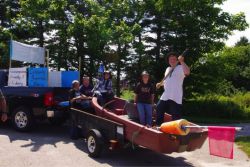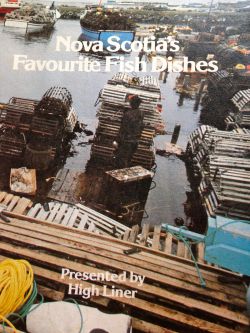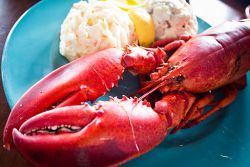Halifax Media Co-op
News from Nova Scotia's Grassroots
Uncovering a Nova Scotia Fisheries Trail, by Sadie Beaton
This blog was originally posted at Small Scales, the excellent East Coast fisheries blog administered by the Marine Issues Committee of the Ecology Action Centre.
“Take yourself there” was this summer’s official Nova Scotia tourism slogan.
Maybe it was a riff on the cancelled Yarmouth-Maine ferry, or our faltering provincial transit system. Or it could refer to the find-it-yourself approach best used by tourists looking to experience the rich culture, history and fresh seafood in Nova Scotia’s fishing communities.
Tourists have long travelled to Nova Scotia to experience a taste of our the province’s fisheries-infused, seafaring culture flavour. And unique and fascinating small-scale fisheries have long been the backbone of Nova Scotia’s coastal communities, fueling our local traditions and economies.
Whether it’s a stroll down a working fishing wharf, a day out clamming , ortossing mackerel at a community festival, there are plenty of opportunities for visitors to get a little wet. But unlike in the 1950s, when Wedgeport’sInternational Tuna Cup was the province’s largest tourist promotion, the onus today is squarely on the traveler. That is, if they want to go beyond gift-shop sou’westers or a postcard with salty old fishermen.
What this province really needs – and it’s a pretty simple approach – is a fisheries trail. Imagine a map of Nova Scotia that highlights our rich fisheries history, working wharves, and opportunities to enjoy delicious fresh local seafood.
In the early 1980s, Nova Scotia Tourism published a sort of fish trail – a booklet sharing recipes for “Nova Scotia’s Favourite Fish Dishes” along each of the province’s scenic coastal routes. Unfortunately, instead of getting input from coastal communities, the department partnered directly with High Liner Seafoods Ltd. That meant Marine Drive’s signature dish was deemed to be “Captain Burgers” made from a processed fish patty, while the Cabot Trail hometown darling was reported as “Captain High Liner’s Shrimp Creole” made from… you guessed it, High Liner’s frozen tropical crustaceans.
Nova Scotia can do better. Way better.
Consider the Downeast Fisheries Trail just over the border in Maine. It’s a perfect example to follow because, just as in Nova Scotia, “Marine resources sustain the culture and economy of Downeast Maine. The Downeast Fisheries Trail builds on these local resources to strengthen community life and the experience of visitors.”
Makes sense, right? The easy-to-read map showcases everything from working harbours, clamflats, aquaculture facilities and processing plants, to museums, community organizations and coastal parks. Created as a partnership between government, academia, and non-profits, the map was based on the outcomes of outreach meetings conducted in local communities.
The time for change is right now- and there’s no need to reinvent the wheel. A Nova Scotian fisheries trail could follow Maine’s model, celebrating our maritime heritage and culture in a way that helps strengthen community life and gets more tourists moving (and spending), too. Instead of boosting the profile and profits of one large fishing corporation, the map could highlight and support thousands of small businesses that depend on a healthy fishery in all coastal communities.
Nova Scotia has amazing maritime museums , fish plants that do direct sales, and dulse-picking adventures . It’s got seaside picnic parks, lobster roll stands, and dozens of community fisheries festivals running throughout the summer.Sure, feature recipes, but how about something real – just like Grandma used to make! Add a seasonality chart for our local seafood and you’ve created a genuine, go-to resource that people are more likely to keep and share.
Let’s help take our visitors there. Finding new ways to celebrate our maritime heritage and culture won’t just bring more tourists to our shores, it will also help ensure vibrant, small-scale fishing communities prosper into the future.
We’d love to hear about the attractions you’d like to see included along a Nova Scotia fisheries trail. Send us a note at SmallScales@ecologyaction.ca
The site for the Halifax local of The Media Co-op has been archived and will no longer be updated. Please visit the main Media Co-op website to learn more about the organization.






